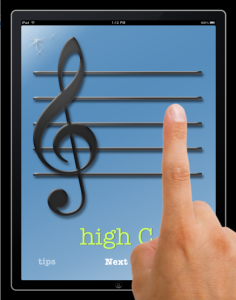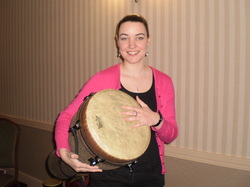
I like to use a variety of jingle bells to accompany this song in my session but I especially love wrist bells! Wrist bells are such a great fun and accessible instrument that allows nearly everyone access to playing an instrument. They can be held, put around a wrist, put around an ankle or a foot, tied to a wheelchair, tied in your hair, tied to another instrument to name but a few. They are so versatile and make a sound VERY easily which is great as it allows many to participate who have very limited mobility.
Activity 1: Quietly Jingle
As they are so easy to use to make a sound it can often be a challenge to keep them still and quiet! Therefore Passing them around a circle trying not make a sound is a great game to play that addresses goals of increased concentration, listening skills, fine and gross motor and socialisation
Activity 2. A symphony of words
Play and sing Jingle Bells and encourage the client to only shake their bells on the word Jingle. This really helps increase concentration and listening skills.
Activity 3: Jingle Little Bell
Another great Jingle Bell Activity you can do at home uses the melody from 'Twinkle Twinkle Little Star'.
This song looks at encouraging listening and movement along with active participation within the familiarity of the popular melody. however be careful and sensitive to reactions when beginning this song as those that are used to the original Twinkle Twinkle words may become agitated and confused with the change.
"Jingle Jingle Little Bell
I like to shake my little bell
Shake it fast (have them shake their bells quickly)
Shake it slow (imitate slow shaking and have them match or assist them in speed change with hand over hand)
Shake it high
Shake it low
Jingle Jingle Little Bells
I like to Shake my little Bell
Jingle Jingle Little Bell
I like to shake my little bell
Shake it here
Shake it there
Shake it, Shake it everywhere
Jingle Jingle Little Bell
I like to Shake my little Bell"
Enjoy music making this weekend and keep warm and safe in the snow!!
Kristen



 RSS Feed
RSS Feed
